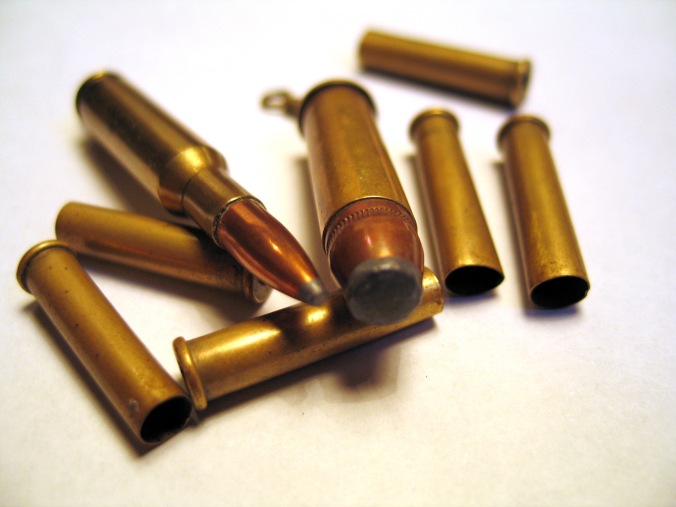
(Photo by Justin Daley via sxc.hu)
Fiction, especially the crime and thriller genres, loves hollow-point bullets, but those aren’t the only game in town. Many varieties exist, with unique shapes and construction types, and their properties may spark some new ideas for fiction.
Review Time: What, Exactly, is a “Bullet?”
Fiction too often treats bullets as if they were this guy:

That’s Krang from the Teenage Mutant Ninja Turtles. You’re forgiven if you didn’t know that. In fact, you get bonus points. (Wikipedia image)
With Krang, its head (or brain, specifically) is the whole of its entire body. That treatment is similar to the way the term “bullet” is confused for “cartridge.” A bullet is part of a cartridge, but it’s not the whole thing. It’s the projectile that fires out of the gun. The cartridge is the sum of everything, including the bullet. That’s the difference.
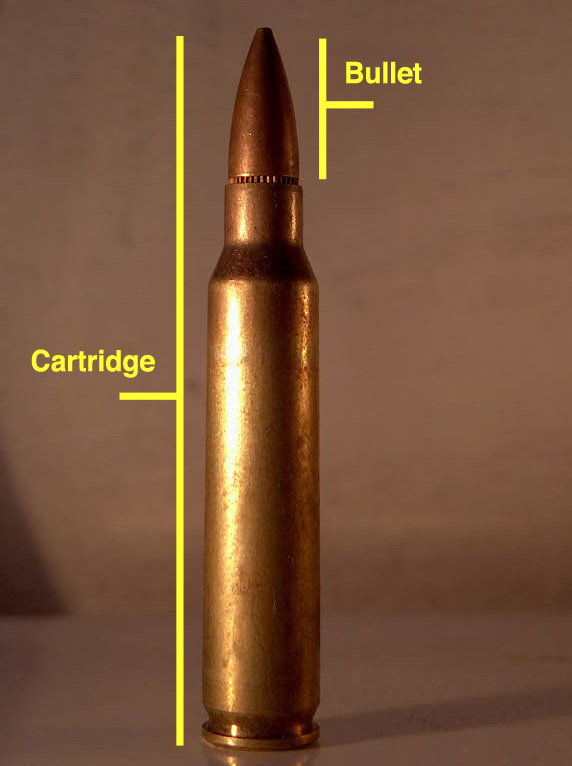
The difference between a bullet and a cartridge is that the former is part of the latter. (Photo by Ammar Abd via sxc.hu)
Therefore, it’s not accurate to use “bullet” when you really mean “cartridge” (or “round” or “shell”).
Are we cool or do you need another obscure pop culture reference? No? OK, good.
Guide to Bullet Shape and Construction Types
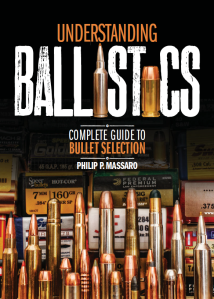 With that housekeeping out of the way, I’d like to introduce you to Understanding Ballistics: Complete Guide to Bullet Selection by Phillip Massaro. It’s an outstanding resource for reloading (a term that in this case means making new ammunition from scratch at home).
With that housekeeping out of the way, I’d like to introduce you to Understanding Ballistics: Complete Guide to Bullet Selection by Phillip Massaro. It’s an outstanding resource for reloading (a term that in this case means making new ammunition from scratch at home).
While that’s a little advanced for most fiction writers, it does have a quick guide to bullet shape and construction types that could be handy for keyboard jockeys. Any given bullet will possess both a shape and a construction type.
The following is excerpted from the book, used with permission by the publisher. This doesn’t represent the totality of all bullet makes, but it gives you a good idea of what’s out there. Pick up the book if you want a master’s course in ballistics, too.
Shape: Round Ball Bullets
The round ball was the earliest available projectile for firearms. Some round balls are seated into metallic cartridges for the purposes of practice and plinking.
Shape: Round Nose Bullets

Round nose bullets. (J.P. Fielding photo)
A bullet with a rounded nose section, or “meplat” (the term for the front or nose portion of any bullet). They were the first type of elongated bullets used in cartridge rifles, and are still in good use today. These bullets can have quite a bit of exposed lead at the nose, to provide good expansion, or are covered in a solid copper jacket for thick skinned game, and are generally used at shorter distances, those within 200 yards.
Shape: Flat Nose Bullets
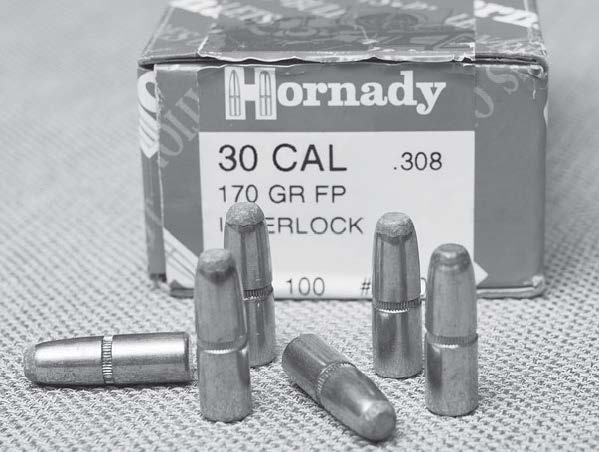
Flat nose bullets. (J.P. Fielding photo)
A blunt or flat tipped bullet, the rifle variety being designed for safety in the tube magazine of many lever-action rifles. Many pistol bullets are flat-tipped to provide a better frontal diameter for energy transmission, too.
Shape: Spitzer Bullets

A variety of spitzer bullets. (By Bouterolle – Own work, CC BY-SA 3.0, https://commons.wikimedia.org/w/index.php?curid=9470625)
A bullet with a severely curved and pointed meplat, whose name is the anglicized derivative of the German “Spitzgeschoss,” which roughly translates to “pointy bullet.” The pointed end of the bullet is designed to allow it to slice through the air better, better resist slowing down, and therefore have a better trajectory.
These bullets, introduced in the late 19th century, made a significant difference in long-range trajectory, and are the most common rifle bullets in use today.
Shape: Semi-Spitzer Bullets
A bullet that blends the characteristics of the round nose and the spitzer; they are more pointed than a round nose, yet not as severely pointed as the spitzer. These bullets offer a better trajectory than the round nose, yet give a similar impact to the round nose on game animals.
Shape: Spitzer Boat-Tail

Spitzer boat-tail bullets. (Gun Digest photo)
A pointed bullet whose base has been angled and tapered, so as to even better resist air drag. Most long-range match bullets for rifle competition or long-range shooting are some form of spitzer boat-tail, be they hollow-point or otherwise.
Shape: Hollow-Point Bullets

Hollow-point bullets are easy to spot. There’s a crater where there should be a point. (Shutterstock photo)
A bullet with a hollow cavity at the nose, designed to rapidly expand upon striking the target. In a rifle, spitzer hollow-point bullets can be wonderfully accurate (although sometimes their fragile construction often precludes them from being used for hunting), and can provide the target shooter with some of the best results.
In a pistol, the hollow-point configuration is often used for its terminal performance in defense situations, due to its rapid expansion and impact trauma.
Shape: Wadcutter Bullets

Wadcutter bullets (foreground). These are the bullets themselves. (J.P. Fielding photo)
A handgun bullet which is a squared slug, with no taper at the nose. The name is derived from the “wad” the bullet cuts out of the paper target. These bullets may feature a hollow cavity at the base to best seal the gasses in the bore of the handgun.
Having no taper at all, they may pose a problem when feeding from a spring-loaded magazine in a semi-automatic handgun (here’s an exception). These bullets perform best in revolvers.
Shape: Semi-Wadcutter Bullets

A semi-wadcutter bullet, separated from its cartridge. This is just the projectile. (Wikipedia image)
A pistol bullet with the rear portion of the wadcutter design, but with a nose section tapered slightly to assist in feeding from a magazine pistol.
Construction: Pure Lead
The softest of bullets, used most often in round balls, and in cartridges for early-era pistol and rifles, .22 rimfire cartridges, and muzzleloading firearms. These bullets have no jacket whatsoever. In the rimfire cartridges, these pure lead bullets are often coated with wax to cut down on lead fouling within the bore.
Construction: Hard-Cast Lead
A bullet made of lead mixed with a small amount of antimony, or other harder substance, so as to be harder than pure lead. This stiffer construction resists over-expansion upon impact and allows the bullet to penetrate into game animals better, and reduce the amount of lead fouling in the bore.
They are very popular in handgun cartridges, lever-action cartridges and the blackpowder cartridges of the late 19th century.
Construction: Cup-and-Core

A look at a cup-and-core bullet from the outside (left) and inside (right). (Gun Digest photo)
A bullet consisting of a lead core, surrounded by a gilding metal (usually copper, sometimes cupro-nickel) so as to be harder than lead and deliver good penetration, yet still malleable enough to engage the rifling in the barrel. The common softpoint bullets have varying degrees of lead exposed at the nose, as well as varying thicknesses of copper jacket. These parameters can dictate the amount of expansion on game animals.
The cup-and-core bullet is the most frequently used bullet to this day. Most big game hunting bullets are of this construction, and more than likely will continue to be so. They are time-proven winners, introduced in the 1880s and their construction allowed the great advances in velocity of the late 1800s and early 1900s.
Construction: Full Metal Jacket
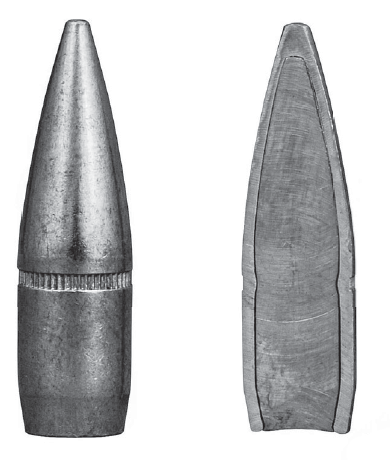
A full metal jacket bullet from the outside (left) and inside (right). (Gun Digest photo)
A bullet that has no exposed lead at the nose, the copper casing completely surrounds the bullet except at the base. Military rifle and pistol bullets are mostly this type (required by the Hague Convention), and many indoor pistol ranges require a bullet to be totally encapsulated in copper so as to minimize the amount of vaporized lead in the air.
In a rifle, these bullets are often used by varmint hunters who wish to preserve the pelts of coyotes, foxes, and other furbearers, as they do not expand and usually leave just a caliber-sized hole. Many military shooting competitions require the use of an FMJ, and there are many highly accurate models on the market.
Some large-caliber bullets designed for penetrating the thick skin of the largest mammals are a modified version of this concept, called “solids.” They have no exposed lead, and the jacket is of steel covered in copper.
Construction: Monometal

An all-copper monometal bullet from the inside (life) and outside (right). (Gun Digest photo)
A relatively modern design of bullet, with no lead core. These bullets are comprised of pure copper, sometimes of brass, and usually feature a hollow cavity to initiate expansion. Some feature a plastic insert at the tip to further promote expansion. This design results in a very strong bullet, which is capable of deep penetration and expansion, without the risk of premature bullet breakup.
These bullets can extend the capabilities of calibers and cartridges which had previously been deemed marginal for a particular hunting scenario.
Construction: Polymer Tip
A bullet that has a plastic or polymer tip inserted at the nose section to prevent any deformation of the meplat. The tip also acts as a method of initiating expansion and increases the ballistic coefficient of the projectile. The polymer tip is used on a wide variety of bullet types and applications, from highly frangible varmint bullets up through bullets for large game.
The Hornady FTX bullet, designed to make spitzer bullets safe in a lever-action rifle’s tubular magazine, uses a flexible polymer tip to avoid detonation in the magazine.
Construction: Bonded Core
This is a bullet that has a lead core that is chemically bonded to the copper jacket, to ensure structural integrity. This process prevents the premature breakup and separation associated with standard cup-and-core bullets driven at higher than normal velocities, as frequently happens with magnum rifle and pistol cartridges.
These bullets make a good choice when deep penetration is needed in addition to good expansion, or when using lighter calibers on game that traditionally requires a larger bore.
Construction Type: Partitioned
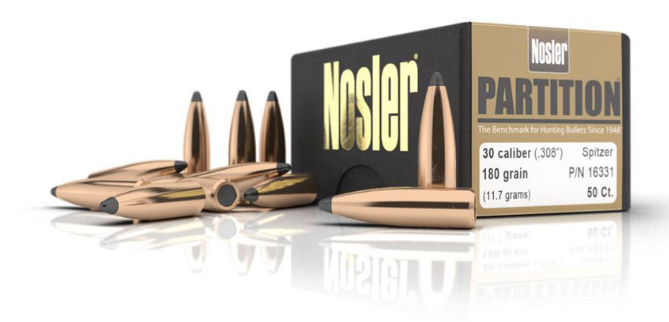
Partitioned bullets. In the foreground are the bullets themselves, separated from their cartridges. (Nosler photo)
These bullets have a standard lead core and copper jacket, but feature a partition that is integral with the jacket, creating two lead cores. The concept (which is well proven) is to have the front core expand, while retaining the weight of the undisturbed rear core for penetration.
This idea saw the light of day in the late 1940s, when John Nosler unveiled his Partition bullet. It remains a staple in the hunting industry, and was among the first “premium” bullets.
Construction: Solids
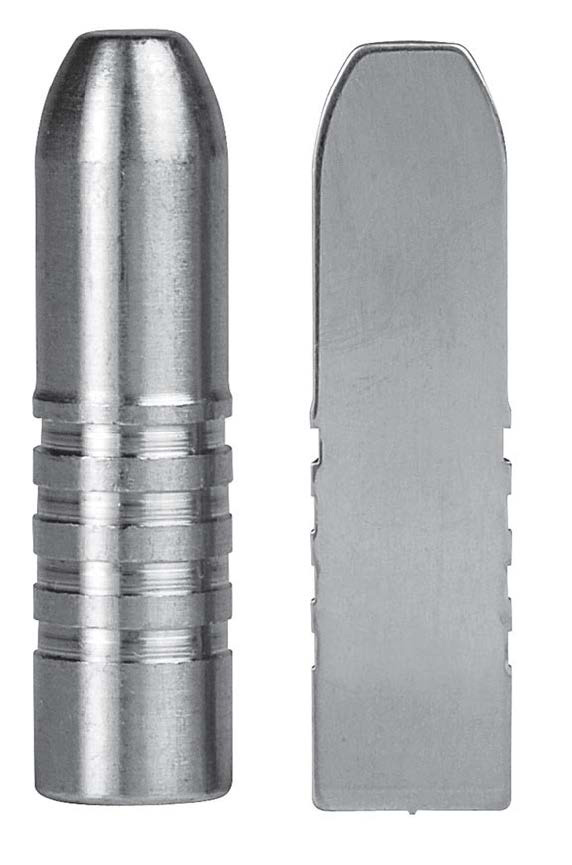
A solid bullet from the outside (left) and inside (right). (Gun Digest photo)
A term used to describe the bullets designed for the heaviest of game, predominantly African dangerous game, such as the hippopotamus, Cape buffalo and elephant. They can be of two designs: either a lead-core bullet with a steel jacket which is surrounded by a slight coating of copper (so as not to damage the rifling), or a monometal affair comprised of either copper (the most common design) or occasionally brass.
These bullets are built for very deep, straight-line penetration, with virtually no expansion at all. Their purpose is to break heavy bone and penetrate thick hides. They are also known as “full-patch” bullets, due to the lack of exposed lead at the nose.
Get the Book
 This information was excerpted from the excellent book, Understanding Ballistics: Complete Guide to Bullet Selection by Phillip Massaro. Pick up a copy to learn everything you never knew you wanted to know about ballistics.
This information was excerpted from the excellent book, Understanding Ballistics: Complete Guide to Bullet Selection by Phillip Massaro. Pick up a copy to learn everything you never knew you wanted to know about ballistics.
I should note that this is strictly a technical book aimed at firearm enthusiasts. Writers won’t find much as it relates to ballistics in forensic applications common to fiction, although the basics are still there. It’s up to you to put the pieces together, but it’s not for beginners.
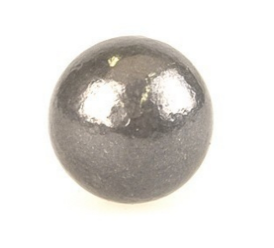

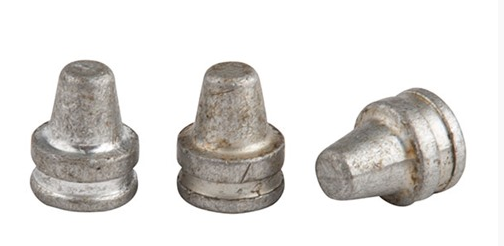
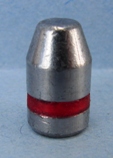
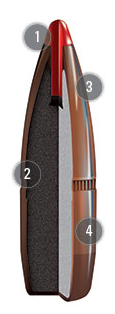

Hard Cast Lead reads like a book title to me. I never expected that many hybrids (semi-variants) of bullets to exist, still it makes sense to consider such, when writing a villain or military police officer.
Thanks for elaborating, Ben!
LikeLiked by 1 person
There certainly are, and this isn’t a complete list by any means. It didn’t touch on frangible bullets, the different types of jackets, alternative metallurgical constructs and lots more. This post is a bit more on the technical side, but I wanted to show the variations for the sake of blog readers who didn’t know about bullet types.
LikeLiked by 1 person
I know caliber-noting and bullet-counting only from video games like ‘Fallout – Tactics’… I fear the day I have to write it flawlessly… x-)
LikeLiked by 1 person
Interesting information. Thanks, Benjamin. 🙂 — Suzanne
LikeLiked by 1 person
Wow. I had no idea there were so many variations. Bookmarking this page for future reference. Thanks, Ben!
LikeLike
Great information and reference! Thanks Ben 🙂
LikeLiked by 1 person
We have a few bullets at home and we tried to match up the ones we had and the ones on our iPod .(hard)
LikeLike
I have had this bullet since i was a child 40 years!!!!, still would Like to know what the screw in the base is for.
LikeLike